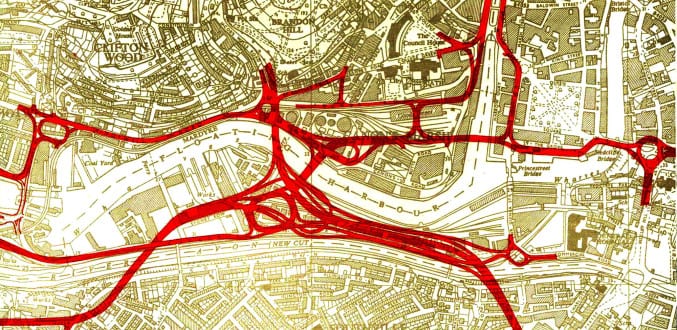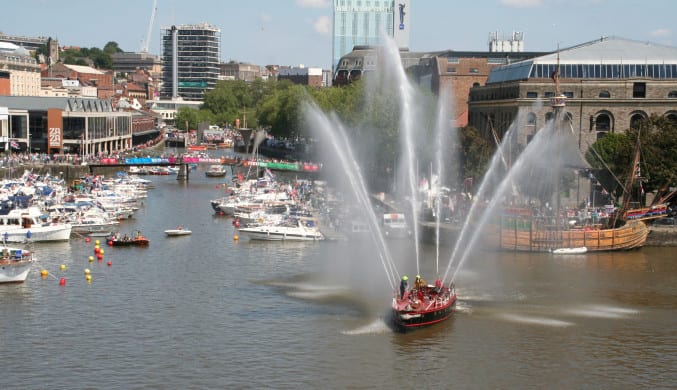A Close Shave – a spaghetti junction in the city docks
Posted on by Lauren MacCarthy.
By Dave Sage, M Shed volunteer
As one ambles along the dockside taking in a visit to M Shed and enjoying everything the area has to offer in terms of leisure and pleasure, it’s salutary to think that this area would look very different if planners had their way in the late 1960s/early 1970s.
Bristolians of long-standing will remember the schemes put forward for the docks, but younger folk and visitors might not be aware that instead of the great amenity we have today, there would be a spaghetti junction of urban dual carriageways and multi-level junctions carrying the Outer Circuit and other roads deemed essential for a modern city.
The map below shows at a glance the extent of the proposed tarmac network. Over the years much has been written about the battle to save the docks and as a Bristolian who’s been standing on the planet for a long time, I remember some of the furore.

Plan from the 1972 Casson Conder report on Bristol City Docks showing proposed road schemes
What brought it all back to me was listening to one of the key campaigners recounting the events of that time, as part of my oral history volunteer role at M Shed. Jerry Hicks* was a significant figure in Bristol’s recent history and without him, and many others like him who fought to save the docks from tarmac and concrete, the Floating Harbour and surrounding area would now be a very different and harsh cityscape.
Listening to the details of the egregious plans is alarming. Many groups including the Civic Society, Cabot Cruising Club and Inland Waterways Association were involved in putting pressure on the planners throughout the process. The role played by the Evening Post in highlighting the worst excesses of the plans also deserves mention.
While it could be argued that the planners were gradually losing the battle in the face of mounting opposition, Jerry’s conclusion is that the crucial factor was the formation of the County of Avon in 1974.
His view was that this was a turning point. The new county had its own planning department and some of the city planners moved to Avon and a new, more sympathetic chief planner was appointed for Bristol.

Jerry Hicks at the time of his interview in 1999
The museum service has a number of recordings with others who were involved in this and similar planning controversies and each interviewee has their own take on the key moments.
These are a great resource for historians writing about this notorious time for the city. 100 recordings on a host of subjects, including this one, are already available online by accessing the museum’s online collections. About 400 more interviews will be available in the coming months.
I doubt that many Bristolians regret the demise of the short-lived County of Avon, but it seems that its enduring legacy is before us in the docks and that coffee drinkers relaxing along the harbour should maybe raise their lattes in a toast to Avon. In these days when hipster beards are all the rage, the expression ‘a close shave’ comes to mind when summing up the fate of the docks.

The harbour as it is today. M Shed’s fireboat Pyronaut at Bristol Harbour Festival, 2012
*Jerry died in 2014 but you can read more about his life online. For a potted version of events try Unbuilt Bristol by Eugene Byrne published in 2013.